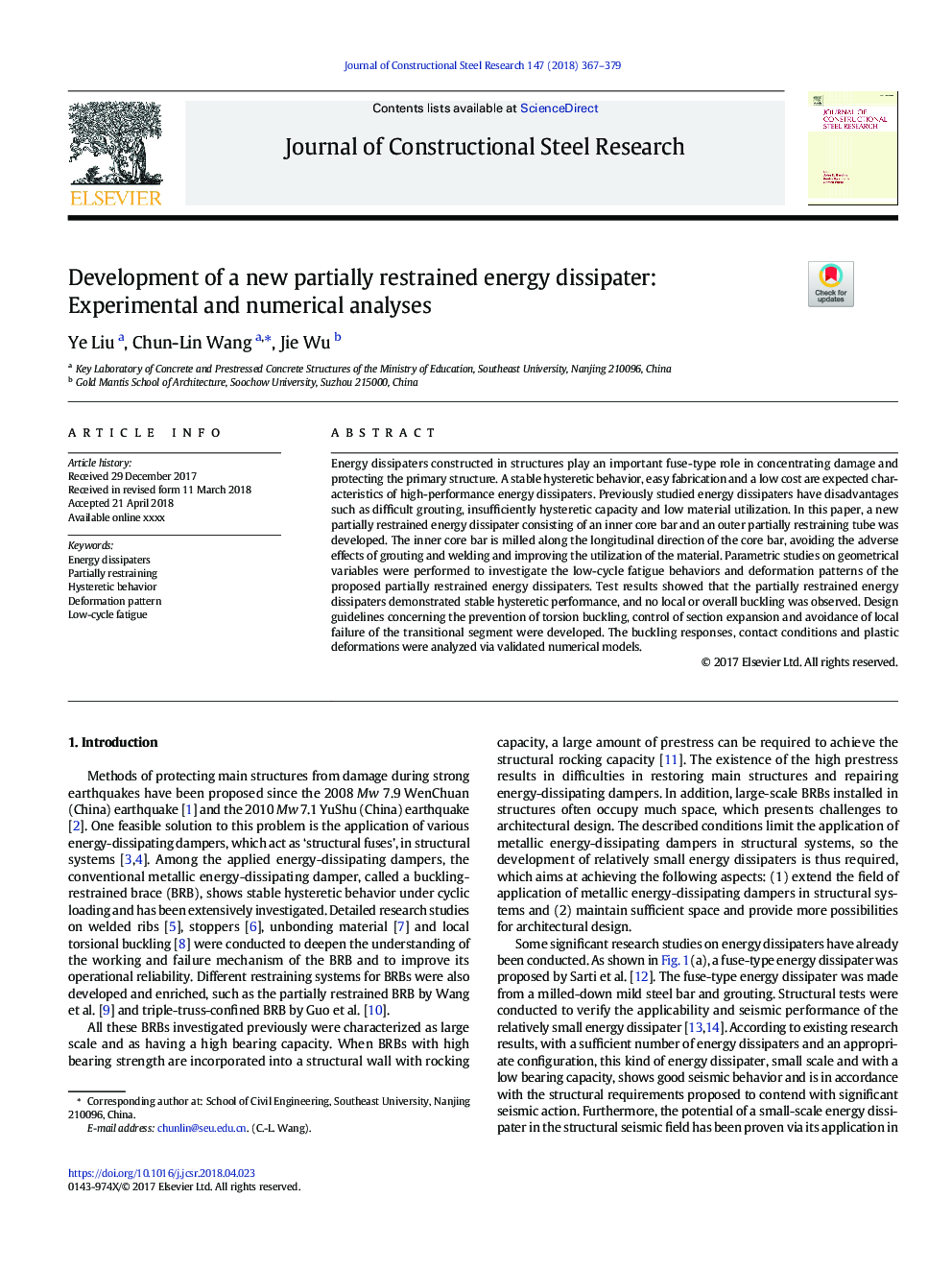| Article ID | Journal | Published Year | Pages | File Type |
|---|---|---|---|---|
| 6750506 | Journal of Constructional Steel Research | 2018 | 13 Pages |
Abstract
Energy dissipaters constructed in structures play an important fuse-type role in concentrating damage and protecting the primary structure. A stable hysteretic behavior, easy fabrication and a low cost are expected characteristics of high-performance energy dissipaters. Previously studied energy dissipaters have disadvantages such as difficult grouting, insufficiently hysteretic capacity and low material utilization. In this paper, a new partially restrained energy dissipater consisting of an inner core bar and an outer partially restraining tube was developed. The inner core bar is milled along the longitudinal direction of the core bar, avoiding the adverse effects of grouting and welding and improving the utilization of the material. Parametric studies on geometrical variables were performed to investigate the low-cycle fatigue behaviors and deformation patterns of the proposed partially restrained energy dissipaters. Test results showed that the partially restrained energy dissipaters demonstrated stable hysteretic performance, and no local or overall buckling was observed. Design guidelines concerning the prevention of torsion buckling, control of section expansion and avoidance of local failure of the transitional segment were developed. The buckling responses, contact conditions and plastic deformations were analyzed via validated numerical models.
Related Topics
Physical Sciences and Engineering
Engineering
Civil and Structural Engineering
Authors
Ye Liu, Chun-Lin Wang, Jie Wu,
